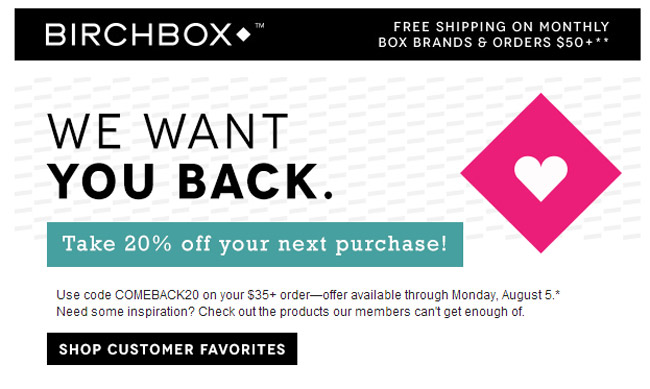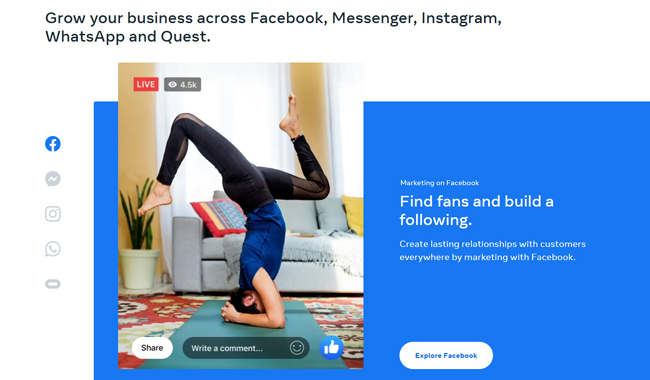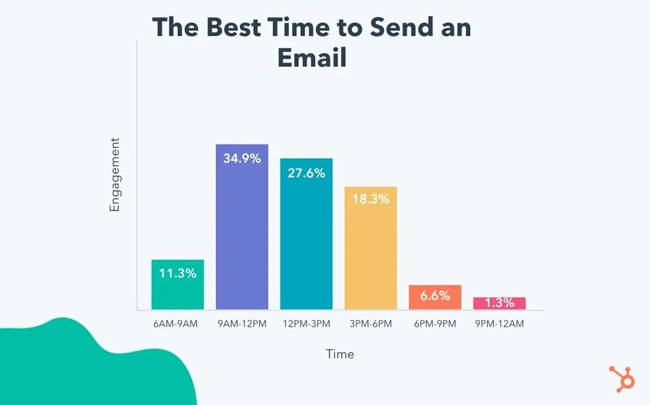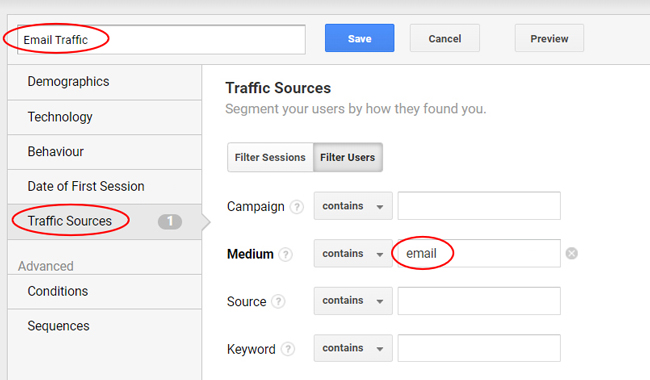Unlike social media platforms that can abruptly shut down or close your account, leaving you with no followers, your email subscriber list is something you can hold dear and nurture with care.
Now, here’s the catch—keeping your subscribers engaged and active can be a little tricky.
Did you know that as a digital marketer, it’s projected that you’ll lose around 25 percent of your email database every year? Some of your subscribers could decide to bid farewell and hit that unsubscribe button, while others may become inactive and show little interest in your emails.
This is all part of the dynamic nature of email marketing, but OnDigitalMarketing is here to help you navigate these challenges and find effective solutions.
Pro Tip: Through re-engagement, you can rekindle the interest of your lost customers and convert them into loyal supporters of your brand.
In our guide today, we’ll take you on a journey through the essential steps and techniques to effectively implement email retargeting campaigns.
We’ll show you how to gracefully guide your lost customers along their user journey, reignite their interest, and ultimately drive those sought-after conversions.
“Email has an ability many channels don’t: creating valuable, personal touches—at scale.”
— David Newman
Throughout this guide, you’ll have the opportunity to learn:
- The pivotal role of email retargeting in re-engaging and converting lost customers.
- How to efficiently segment your audience based on their behavior and interactions.
- Strategies for crafting irresistible email retargeting campaigns that capture attention.
So buckle up and get ready for some email marketing magic with these five email retargeting strategies.
1 – Master the Art of Email List Segmentation
To make your email retargeting campaigns a smashing success, get friendly and familiar with your audience and slice the campaigns into segments based on their behavior and interactions.
Learn how you can segment your email list in the video below:
Sending them generic emails as a re-conversion tactic never works; it will only cost you more time, with no tangible results.
So correctly segment your customers and figure out what has made them disengage.
The disengagement could stem from many reasons. Maybe they signed up to snag a special offer or gift, and once they received what they wanted, their interest waned.
Some of them might have added items to their cart, only to be deterred by pricing, payment methods, or a clunky checkout process, causing them to abandon ship.
And let’s not forget about those who simply forget to check their emails. It happens. In fact, according to a recent study by Mailbird on email use, the results revealed that the average person leaves approximately 35% of their emails unread.
The good news is that you have the power to dig into why your subscribers are no longer engaging with you.
Many email service providers offer detailed analytics, allowing you to see who opens your emails, who hits the unsubscribe button, and various other nifty stats.
Example: Moosend, for instance, provides access to comprehensive email analytics that offer valuable insights into crucial metrics such as email opens, clicks, bounces, custom event tracking, and predicted demographics data.
Now, if you notice an entire demographic is disengaged, that’s a clear sign you’re not addressing their pain points. It’s time to take action and rectify the situation.
By tailoring your messages to specific customer segments, you can work some magic and bring back these lost customers, converting them into happy buyers.
Here’s your winning strategy:
1 – Segment Like a Pro
Divide your audience into neat little segments based on their actions and preferences.
Think about what products they’re interested in, their browsing history, previous purchases, or those pesky abandoned carts.
By doing this segmentation dance, you’ll create email campaigns that speak directly to each customer’s unique needs and interests. For example, you can send personalized recommendations based on their previous interactions.
We love how Crate & Barrel has used this clever strategy in this re-engagement email.
By recommending to their subscribers a curated collection of items that harmoniously complement each other and align with their recent purchases, they’ve made it easier for subscribers to re-engage and even make another order.
2 – Dive Deep Into Your Customers’ Data and Analytics
Take a deep dive into your customer data and uncover some hidden gems. Analyze their browsing history, purchase patterns, and how they’ve interacted with your website or app.
Look for patterns and pinpoint customers who’ve shown interest but haven’t sealed the deal or explored further.
With data and analytics tools on your side, you’ll unearth some valuable insights about your audience.
Below are two fantastic data and analytics tools with valuable insights that can help you get to know your customers better:
- Google Analytics: A staple tool for many website owners that offers detailed information about website traffic, user behavior, and conversion rates.
You can track key metrics such as the number of visitors, their demographics, popular landing pages, and even their journey through your site. - Kissmetrics: A digital tool that focuses on customer behavior and provides insights into customer journeys, conversions, and customer retention.
It tracks individual user actions, allowing you to create personalized experiences based on their specific behaviors.
3 – Take a Walk in Your Customer’s Digital Shoes
Put yourself in your customers’ shoes and stroll through their typical journey on your website or app. Identify those key moments when they tend to lose interest or abandon ship.
Armed with this knowledge, you can target specific stages of your customer’s journey with emails that hit the right notes.
Think of nurturing emails that educate and guide those cart abandoners back to the checkout.
Remember, it’s way more cost-effective to re-engage inactive customers than to convert new cold leads.
But here’s the thing—you need to think strategically about the timeframe for inactivity. The duration depends entirely on your company and its dynamics:
- If you run a grocery business where customers typically make weekly purchases, you may want to wait no longer than a month before reaching out.
- But if your business only requires customers to check in once every month or two, you might give them a breather of three or four months before deeming them inactive.
And here’s a clever re-engagement move: If your clients previously engaged when they abandoned their cart, why not send them an email asking if they forgot something? It’s a friendly nudge that can reignite their interest in a jiffy.
Remember: Segmenting your subscribers and crafting personalized re-engagement strategies will breathe new life into your email marketing efforts. Say goodbye to generic emails and hello to a world where your messages hit the right spot every time.
2 – Elevate Your Online Marketing Game With Captivating Email Retargeting Campaigns
Crafting captivating email retargeting campaigns is a game-changer when it comes to re-engaging and converting your lost customers.
Email retargeting campaigns are all about re-engaging with subscribers who have previously interacted with your brand but have not yet taken the desired action.

Source: brevo.com
The first step you want to take is to come up with an objective for your campaign.
Consider these three questions to get started:
- What does customer engagement mean to you? It’s all about defining what actions indicate meaningful interaction with your emails.
Do you want to focus on open rates, responses, or maybe the traffic generated from email clicks? You get to decide what really matters to you and your campaign. - How much customer engagement do you want to drive? Put a measurable goal in place, like aiming for one out of every ten subscribers to respond to your emails.
Quantifying your expectations helps you track progress and see how well your campaign is doing. - Which other channels do you want to integrate with your email campaign? Think outside the inbox. Consider how you can combine email with other channels to boost your customer engagement.
Social media, your website, or even offline events can all play a role in amplifying the impact of your campaign.

Source: facebook.com
And with the right strategies in place, you can create personalized and attention-grabbing email content that will reignite the interest of your customers, remind them of what they loved about your brand, and entice them to take action.
Here are four strategies that will make your email retargeting campaigns stand out and deliver fantastic results:
- Create personalized and relevant content: Tailor your emails to your customers based on their preferences and past interactions, creating a personal touch that will spark curiosity and re-ignite their engagement.
- Write catchy subject lines: Craft irresistible subject lines that instantly grab attention and motivate your customers to open your email. Use actionable language and create a sense of urgency or exclusivity that will entice them to explore further.
- Include compelling visuals: Incorporate visually appealing elements in your emails to make them visually engaging and convey emotions. Use high-quality images, videos, or GIFs that capture attention and support your message.
- Add a strong Call-to-Action (CTA): Include clear and persuasive CTAs that guide your recipients toward the desired action. Use action verbs and highlight the benefits they’ll gain from taking that step. You simply need to make it easy and appealing for them to engage.

Source: thebudgetnista.com
(An example of this strategy is showcased in this Path’s re-engagement email. The photo editing app has strategically displayed its latest features to attract the attention of inactive subscribers.The prominent ‘Update Now’ call-to-action (CTA) effectively grabs the users’ interest and encourages them to engage by urging them to update their app.)
And don’t forget the power of storytelling. Share your brand’s success stories, testimonials, or user-generated content that showcase the positive experiences other customers have had with your company.
This will help to build trust and credibility, reminding your lost customers why they were initially drawn to your brand.
3 – Drive Maximum Impact Through Enhanced Email Deliverability and Timing
Crafting compelling content is vital for effective email retargeting campaigns, but don’t forget the equally crucial aspects of optimal email deliverability and timing.
High email deliverability will ensure that your emails actually reach your intended customers’ inboxes instead of being lost in spam folders or blocked by filters, increasing the chances of your retargeting messages being seen and acted upon by the customers.

Source: blog.hubspot.com
Timing is everything when it comes to effective email retargeting. By delivering your emails at the right time, you’ll catch your target customers’ attention when they’re most receptive.
This increases their likelihood of engagement and conversion because your message aligns with their current needs and interests.
Consistently delivering emails at the right time and ensuring their successful delivery is also an excellent way to build trust and credibility with your customers.
When you consistently dish out valuable and relevant content, your customers are more likely to engage with your emails, leading to stronger customer relationships and higher conversion rates.
Some of the actions you can take to ensure that your emails not only reach your customers’ inboxes but also arrive when they’re most likely to engage include:
- Maintaining a positive sender reputation by consistently engaging with your audience and avoiding spam trigger words in your email content.
- Using a reliable email deliverability tool like Mailflow or Mail Tester to test for any potential issues before sending your emails.
- Analyzing your customers’ time zones and past engagement data to determine the best times to send your emails.
- Taking advantage of audience segmentation to personalize your content based on the specific interests and behavior of different customer segments.
4 – Elevate Your Performance Through Automated and Personalized Email Retargeting
Despite email retargeting being a game-changing strategy to re-engage and convert lost customers, managing and personalizing your email campaigns can still be a bit overwhelming, especially when you have a large audience.
That’s where automation and personalization step in, making your life easier and your campaigns more effective.
“Personalization—it is not about first/last name. It’s about relevant content.”
— Dan Jak
Automated email retargeting allows you to reach out to your lost customers with personalized messages tailored to their specific preferences and past interactions.
You’ll also be able to set up timely follow-up sequences, meaning that whenever a customer shows signs of disengagement, like not opening or clicking your emails, a carefully crafted series of messages will be triggered to re-engage them at the right moment.
Automation tools such as Mailchimp, EmailOctopus, and MailerLite, make all these possible. They’ll seamlessly integrate with your email marketing system, allowing you to set up triggered campaigns based on user actions or behaviors.
That means less time spent manually following up and more time for you to do the things you love. It’s like having a personal assistant who knows just when to send the perfect email.
Segmenting your customers based on their preferences, purchase history, or browsing behavior will also let you create email content that speaks directly to them.
Add in their names, offer personalized recommendations, and watch the magic happen. They’ll truly appreciate the extra care and attention.
And with dynamic retargeting (a powerful technique that allows you to personalize your ads or content based on the specific interests and behaviors of every customer), you can show different product recommendations, offers, or messages to your customers based on their interests.
Here’s how dynamic retargeting works: Let’s say a customer visits your website and looks at a particular product, but doesn’t make a purchase.
With dynamic retargeting, you can then show them ads or content that specifically feature that same product, reminding them of their interest and enticing them to come back and make the purchase.
It’s like giving them a gentle nudge, saying, “Hey, remember that awesome product you liked? It’s still here, waiting for you.”
But dynamic retargeting goes beyond just showcasing the same product. It can also display related items or complementary products based on what your customer has shown interest in.
So if they were eyeing a pair of shoes, you can show them ads for matching accessories or even suggest similar styles they might love. It’s all about delivering a personalized experience that feels tailor-made just for them.
5 – Measure and Refine Your Email Retargeting Success
By measuring your email retargeting efforts, you gain valuable insights into what’s working and what’s not in your campaigns.

Source: enginemailer.com
When you analyze your customers’ data, you’ll discover the strategies and content that truly resonate with them.
You’ll find those magical elements that make your customers take notice, engage with your emails, and ultimately convert them into loyal customers.
With these valuable insights, you can make informed decisions about your future email retargeting efforts. You’ll know what strategies to double down on and what aspects to improve or adjust.
Measuring your email retargeting efforts also helps you to refine your strategy. With the consumer data you collect, you have the power to fine-tune and optimize your approach, bringing you closer to achieving your customer re-engagement and re-conversion goals.
One area of refinement is experimenting with different subject lines. The subject line is the first impression your email makes, so ensure that it’s tailored in a way that will grab your customers’ attention.
Test different approaches, such as:
- Using personalized subject lines
- Creating a sense of urgency
- Teasing intriguing content
Each variation allows you to understand what resonates best with your customers, increasing the chances of them opening your emails and reading your message.
Another aspect to refine is your call-to-action (CTA). The CTA is like a signpost that directs your customers toward the desired action, whether it’s making a purchase, signing up for a webinar, or downloading a resource.
Test different CTAs, such as using different wording, colors, or placement within your email. By experimenting and analyzing the data, you can discover the most compelling CTAs that drive clicks and conversions.
Design elements also play a vital role in capturing your customers’ attention and enhancing engagement. Test different email layouts, visuals, and typography to find the right combination that aligns with your brand and resonates with them.
A visually appealing and well-structured email can make a significant impact on how your message is received and acted upon.
Check out how attractive this re-engagement email from BirchBox is. They’ve even made it more captivating by presenting their subscribers with two enticing options, creating a highly rewarding avenue for re-engagement.
Remember, each adjustment and refinement brings you one step closer to crafting the perfect recipe for re-engaging your lost customers and boosting conversions.
It’s an iterative process where you learn from the data, adapt your strategy, and optimize your email retargeting efforts to create a truly impactful campaign.
Consider the following tips to effectively evaluate your performance and make data-driven improvements:
- Track key metrics: Keep an eye on important numbers, such as open rates, click-through rates (CTRs), conversion rates, and revenue generated from your email retargeting campaigns. These metrics hold the key to understanding how well your campaigns are performing.
- Analyze segment performance: Take a closer look at how different customer segments are responding to your campaigns. Identify those high-engagement segments and adjust your targeting strategy to better cater to their unique characteristics and behaviors.
- Continuous optimization: Small tweaks can lead to big improvements, so keep iterating and improving your campaigns like a true marketing maestro. Adjust your messaging, timing, and personalization to truly resonate with your target audience.
- Take note of your customer’s feedback: Gather your customers’ insights directly through surveys or feedback forms. Their input is pure gold, since it will help you refine your email retargeting approach based on their preferences, expectations, and pain points.
The table below provides an overview of key metrics and their optimal or benchmark numbers for measuring the success of email retargeting campaigns.
| Metric | Optimal/Benchmark Number | Description |
| Open Rate | 20–30% | The percentage of recipients who opened the retargeting email |
| Click-Through Rate (CTR) | 2–5% | The percentage of recipients who clicked on a link within the retargeting email |
| Conversion Rate | 10–20% | The percentage of recipients who completed a desired action (e.g., made a purchase) |
| Revenue Generated | Varies based on business objectives | The total revenue generated from conversions attributed to the retargeting campaign |
| Return on Investment (ROI) | Positive ROI | The ratio of the campaign’s net profit to its cost, indicating the campaign’s efficiency |
| List Growth Rate | 5–10% | The rate at which the retargeting campaign contributed to the growth of the email list |
| Unsubscribe Rate | <1% | The percentage of recipients who unsubscribed from the email list after the retargeting |
| Bounce Rate | <2% | The percentage of retargeting emails that were not successfully delivered to recipients |
| Customer Lifetime Value (CLV) | Varies based on business model | The predicted net profit from a customer over the entire duration of their relationship |
| Engagement Rate | Varies based on industry | A measure of how actively recipients interacted with the retargeting email content |
| Spam Complaint Rate | <0.1% | The percentage of recipients who marked the retargeting email as spam |
| Social Sharing Rate | Varies based on campaign | The percentage of recipients who shared the retargeting email on social media |
| A/B Testing Results | Depends on specific test parameters | Comparison of different versions of retargeting emails to identify the most effective one |
Take Action and Reclaim Lost Opportunities With Email Retargeting
Your re-engagement email sequence is like a missing puzzle piece that completes the whole picture. It’s designed to win back those customers who may have slipped through the cracks and missed out on your previous offers.
By implementing these effective email retargeting strategies, you have a chance to reignite your customers’ interests and secure those sales that might have otherwise been lost.
However, remember that email retargeting is just a piece of the puzzle when it comes to driving sales to your website.
There are plenty of other powerful strategies that can work hand in hand to amplify your results, including social media engagement, content marketing, and remarketing ads.
So if you’re eager to stay one step ahead of the competition and elevate your digital marketing skills, OnDigitalMarketing has something special for you.
Sign up for our email newsletter, and you’ll gain access to the latest insights, exclusive tips, and valuable information about our upcoming digital marketing courses.
Join our community of ambitious marketers and let us guide you towards digital marketing greatness.